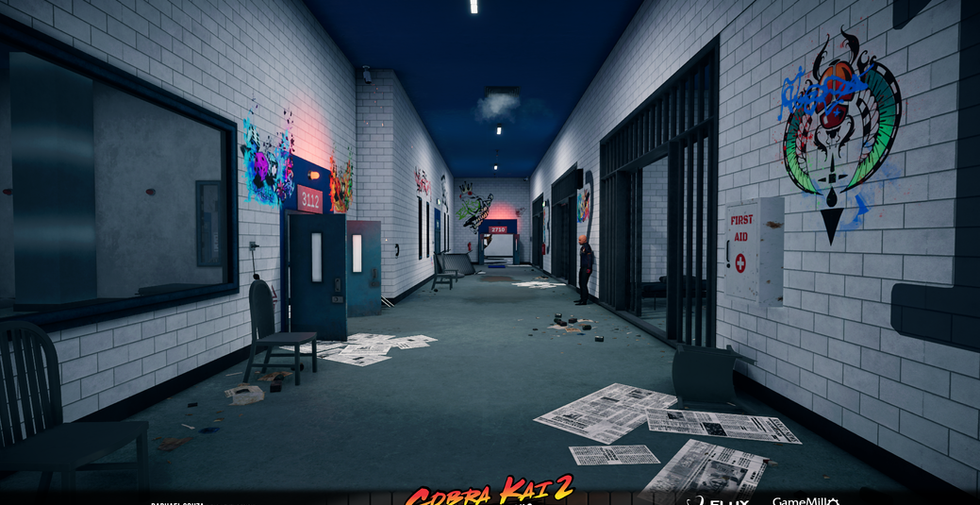
Cobra Kai 2: Dojos Rising
The sequel game to "Cobra Kai Karate Kid saga continues". Both games were inspired by the universe of the "Cobra Kai" TV series that presents the legacy of the characters from the "Karate Kid" movie saga. Unlike its predecessor, "Dojo Rising" forsook the stylized graphics and 2.5D camera to offer fans a more realistic 3D environment and graphics experience.
8 de nov. de 2022
Here the player has control of one of the three dojos, Cobra-Kai, Miyagi-Do or Eagle-Fang and can experience a "what if" experience by making his own choices and changing the course of the end of the game. The game was released for multiple platforms, including: PlayStation 5, PlayStation 4, Xbox Series X|S, Xbox One, Nintendo Switch and PC via Steam.
In this project, shortly after the start of development I took on the role of Lead Level Designer, so in the approximate period of 1 year and a half I was responsible for leading a team of 1 to 3 level designers throughout the project. Together we developed a total amount of 16 3D levels, which were used in the 4 main game modes.
Throughout the project I have built 6 blueprints, made the blockout of 9 levels, 3 prop placements, 3 minigames, 2 variations of levels for Cobra Classics mode and I was involved at different levels in the balancing and implementation of systems of all levels.
Undoubtedly, a project of this size provided me with several challenges and lessons learned, by far one of the biggest was working on the progression and balance of the game, given that in campaign mode the player is given the power to choose which level he will go to next based on on the characters he had already recruited. So we had countless possibilities for the order of the levels and we needed to build the difficulty of each level and the distribution of his enemies in a way so that the player was introduced to these challenges without the need to have learned something in a previous level other than the basic tutorial in the dojos.
Other particular challenges of this project involved the fact that the game is an adaptation of the content in the television series, finding the balance between making the gameplay of a fun level and maintaining fidelity to the original environments was a very pleasant job.
Main contributions:
Leadership of the level design team;
Level Design Direction;
Construction of Level blueprints;
Level blockout;
Prop placement;
Implementation of phase flow systems;
Positioning and implementation of enemies in levels;
Balancing of progression and difficulty of levels;
Resource distribution/placement at level;
Game systems design;
Development tools design;
Participation in creative decisions and troubleshooting;
Creation of level design development processes;
Creation of diagrams and quantitative and qualitative analysis of the game;
Access the game:
Power in Numbers
76
People involved
16
Created levels




























